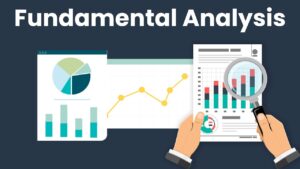The foreign exchange market, also known as Forex, is the world’s largest financial market, with trillions of dollars exchanged daily. This vast market operates 24 hours a day, but activity isn’t evenly distributed. Trading sessions in different financial hubs around the globe take turns driving the market, and these sessions significantly impact forex volatility.
This article explores how the three major trading sessions – Asian, European, and North American – influence price fluctuations in the Forex market.
Understanding Volatility in Forex
Volatility, in the context of forex trading, refers to the extent to which the exchange rate of a currency pair fluctuates within a given timeframe. High volatility translates to larger price swings, offering potential for profit but also increased risk. Conversely, low volatility indicates a calmer market with smaller price movements.
Several factors contribute to forex volatility, including:
- Economic data releases: News and events impacting a particular economy can cause its currency to strengthen or weaken, leading to increased volatility.
- Central bank policy decisions: Interest rate changes and other monetary policies can significantly affect exchange rates and market volatility.
- Geopolitical events: Political instability, wars, or trade tensions can create uncertainty and drive volatility in the Forex market.
- Trading session activity: The number of participants and overall trading volume in a particular session influences volatility.
The Three Major Forex Trading Sessions and Their Impact on Volatility
The Forex market operates continuously, but activity is concentrated in three main geographical regions:
- Asian Session (Tokyo, Sydney): This session typically runs from around 00:00 GMT (Greenwich Mean Time) to 14:00 GMT. Major participants include Japan, Australia, China, and New Zealand. The Asian session is known for:
- Lower overall volatility: Due to less overlap with other major markets, trading volume tends to be lower in the Asian session. This often results in a calmer market with smaller price swings.
- Focus on regional factors: Economic data releases and events from these economies can influence the session’s volatility, particularly for Asian currency pairs like AUD/JPY (Australian Dollar vs Japanese Yen).
- Carry trade activity: Carry trade strategies, which involve borrowing in a low-interest-rate currency and investing in a high-interest-rate currency, can sometimes contribute to volatility in the Asian session.
- European Session (London): The European session, often considered the most active, runs from around 07:00 GMT to 17:00 GMT. Key players include the United Kingdom, Germany, France, and Switzerland. This session is characterized by:
- Higher overall volatility: The European session generally sees the most significant trading volume due to the overlap with the later part of the Asian session and the beginning of the North American session. This overlap creates a period of increased market activity and often leads to higher volatility.
- Impact of European data: Economic data releases from the Eurozone can significantly affect the Euro (EUR) and other European currencies, driving volatility.
- Focus on major currency pairs: The Euro and the British Pound (GBP) are heavily traded during this session, and volatility in these currencies can influence the broader market.
- North American Session (New York): The North American session operates from around 13:00 GMT to 21:00 GMT. The United States is the dominant player, with significant participation from Canada and Mexico. This session is known for:
- High volatility in the early hours: The initial overlap with the European session often sees high trading volume and volatility, similar to the European overlap with the Asian session. However, activity can taper off later in the evening as European markets close.
- Impact of US data: Economic data releases and Federal Reserve policy decisions can significantly influence the US Dollar (USD) and overall market volatility.
- Focus on USD-related pairs: The USD is the world’s reserve currency and is heavily traded against other major currencies. Volatility in the USD can have a ripple effect on the entire Forex market.
Overlapping Sessions and Volatility Spikes
The periods where two major trading sessions overlap are particularly noteworthy for volatility.
- Asian-European Overlap: This overlap (around 07:00 GMT) often sees a surge in activity as European markets open and Asian markets remain active. This can lead to increased volatility, especially for currency pairs commonly traded in both regions.
- European-North American Overlap: Highest trading volume and often leads to the most significant volatility in the Forex market. This period is ideal for traders seeking opportunities from larger price movements but requires a higher tolerance for risk.
Tailoring Your Trading Strategy to Session Volatility
Understanding how different trading sessions impact volatility is crucial for forex traders. Here’s how you can leverage this knowledge:
- Identify your risk tolerance: Are you comfortable with the larger price swings associated with high volatility sessions, or do you prefer the calmer conditions of lower volatility periods?
- Choose your currency pairs: Certain currency pairs are more active during specific sessions. For example, EUR/JPY might be a good choice for the Asian session, while EUR/USD could be more suitable for the European and North American overlap.
- Adjust your trading strategy: High volatility sessions might be better suited for scalping strategies that capitalize on short-term price movements. Conversely, lower volatility periods might favor longer-term swing trading approaches.
- Monitor economic data releases: Pay close attention to scheduled economic data releases and central bank meetings that can significantly impact volatility during specific sessions.
By understanding session-based volatility patterns and tailoring your strategy accordingly, you can make informed trading decisions and potentially improve your success in the dynamic Forex market.
Additional Considerations
- News and events: Unexpected news or geopolitical events can cause significant volatility spikes regardless of the trading session. Staying informed about global developments is crucial for all forex traders.
- Liquidity: Liquidity refers to the ease with which you can enter and exit a trade. While generally high during peak trading sessions, liquidity can be lower in off-peak hours, potentially affecting your ability to execute trades quickly and efficiently.
- Market holidays: Trading activity can be significantly lower during national holidays in major financial centers. Be mindful of these holidays when planning your trading schedule.
In conclusion, the Forex market is a complex and ever-evolving landscape. Understanding how different trading sessions influence volatility equips you with valuable knowledge to navigate this market effectively. By combining this knowledge with sound risk management practices and a well-defined trading strategy, you can increase your chances of success in the exciting world of forex trading.
Let’s Manage Your Forex Funds With Fx Pips Guru!
Fx Pips Guru is a forex fund management company managing client’s funds based on monthly profit share. Let’s do Live Chat with our experts.




